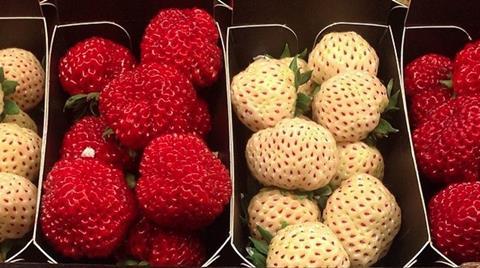
Towards the end of this year’s Global Berry Congress, which took place yesterday in Amsterdam, I was asked to provide a summary of the major points made during the course of the conference.
Alongside the 360 or so delegates packed into the Grand Ballroom at the NH Krasnapolsky, I was privileged to hear the thoughts of some of the leading retailers, suppliers, marketers, breeders and growers involved in what is evidently one of the most exciting and vibrant categories in the fresh produce business.
For those that were unable to attend the event, below is an unedited version of my summary.
A new way forward for the global berry sector
Where the business stands…
In terms of confidence and optimism in the international berry category, not a great deal has changed compared with this time last year. It’s still very much a boom time for the berry category and, if anything, here in Europe the mainland market trend is extremely positive – especially for blueberries.
As we’ve heard today, there are lots of factors in the category’s favour:
– Yes, it’s generally an impulse purchase, but berries enjoy a kind of exalted, special status among consumers, particularly as a result of their much-publicised ‘superfood’ status (especially blueberries)
– Waste awareness is making shelf-life more important to consumers
– Faster lifestyles are driving the need for convenience
– Health concerns are working in berries’ favour, for example encouraging parents to give their kids more fruit
– Retail support for the category is strong and increasing
– Co-ordinated marketing campaigns have helped raise the category’s profile
– The economic recession is placing more emphasis on all these added values
What we could learn…
We’ve heard a lot today from several different players in the fresh berry business about how we might ensure that the successful expansion of the category seen in recent years continues in the years to come.
Two things really stand out as essential factors in achieving that goal:
1—Innovation:
– Varieties (and even berry types, eg black raspberries)
– Taste (eg distinguishing between sweet and tangy; and marketing products as such)
– Protected variety models or clubs
– Production practices (eg better crop protection)
– Packaging
– Merchandising
– Marketing
– Perhaps even new forms of retail distribution (eg online)
– More growth in other channels like foodservice
2—Consistency:
– Taste (‘taste-life’)
– Availability
– In the supply chain
– Overall quality
– And plenty more besides…
During Global Berry Congress 2014, all of us at Eurofruit have been particularly struck by a number of big challenges identified by those taking part. These included:
– Getting product to market as quickly as possible, regularly and at the right time
– Giving customers and consumers excellent quality, taste, shelf-life etc while growing sales volume
– Providing similar quality in the off-season as part of a year-round programme
– Breeding the right berries and having the money to do so
– Supplying local for local by producing in the market
– Coping with anticipated new demand, but avoiding putting poor quality into market
– Coping with the inevitable problems associated with rapid growth
– Getting product to the right place at the right time
– Coping with growth of the discount sector, either by supplying quality at affordable prices or turning perhaps to the premium end of the market
– Coping with lower availability of resources like water, labour etc
– Understanding all markets, not just your own; knowing what’s happening elsewhere that might influence your own business
Naturally, that last point is one that Eurofruit and its sister publications can help with, by providing market insight and information via the various print and online publications and events we produce.
Looking ahead…
Growth in the sector seems assured for the time being, but to coin a phrase, we mustn’t count our chickens, certainly not in the medium to long term. One of the major mistakes, it seems clear, that needs to be avoided is over-production and a rush to produce fruit simply to meet demand in terms of volume. Others will almost certainly look to produce berries and I think it’s clear that the key thing will be not to embark on a race to the bottom, the kind of drive towards a low-cost, commoditised model.
What Marion Durose of Angus Soft Fruits said during her presentation about blackberries seems very important – don’t get ahead of the game; have the right product before pushing growth in a particular segment. The berry sector seems to be growing and developing in the right way, which is good news for the fresh produce sector as a whole – especially given the huge economic challenges experienced over the past decade.
Like any journalist, I always search for a good analogy to convey and explain an idea, so what’s the right analogy for the berry business? Well, how about the Dutch mastery of flood defences? If it’s correct that the next few years could see a potential flood of new berry production from growers buoyed by strong demand, then these various innovations and consistencies I’ve referred to above are arguably the walls, dykes and channels that will hold back that tide and protect consumers– and, indeed, the berry trade from its own potential over-eagerness to supply demand.
And of course, those defences will require continued investment, which itself requires forward planning.



